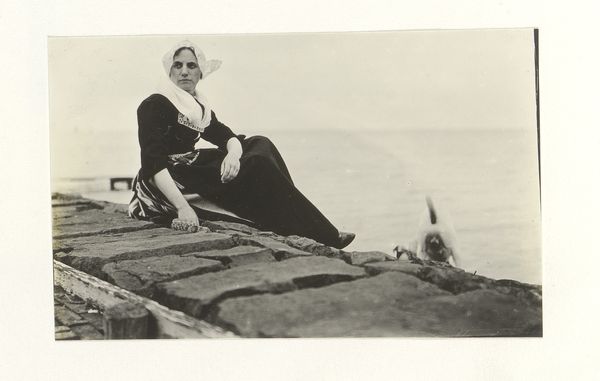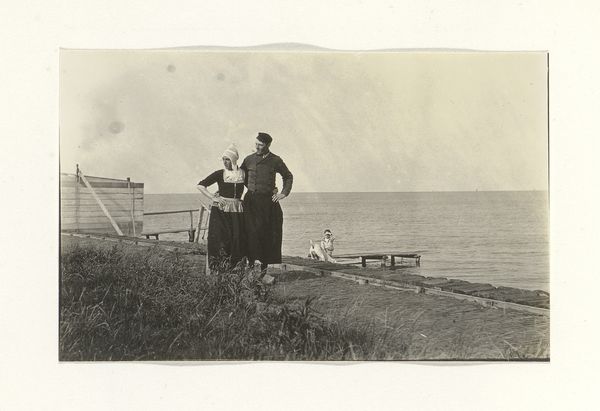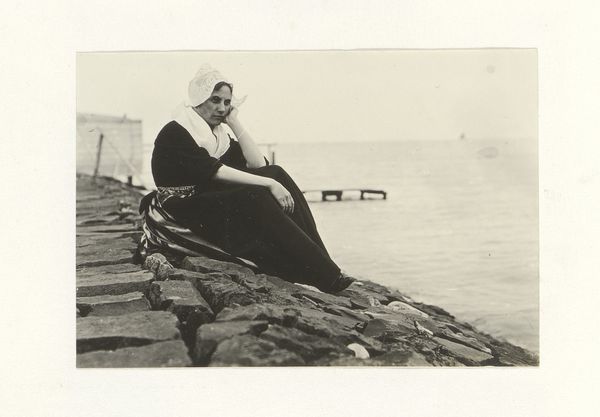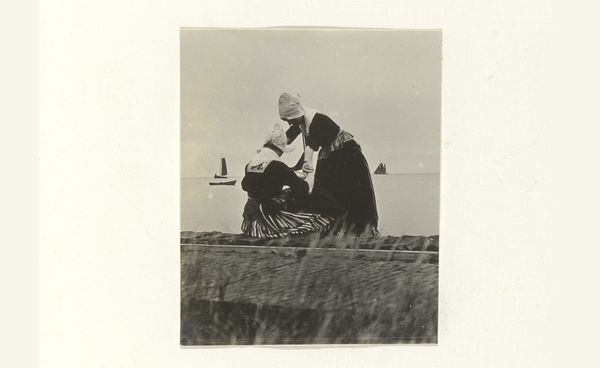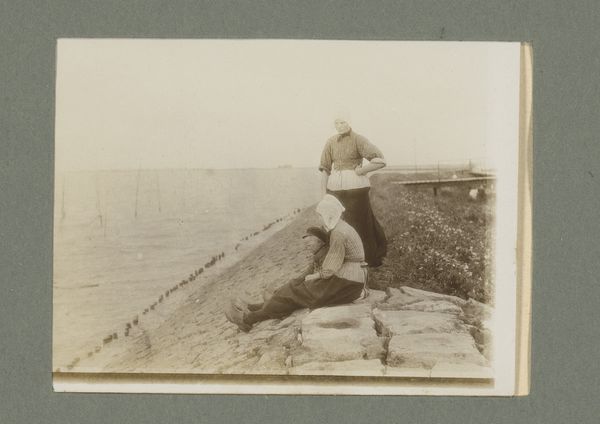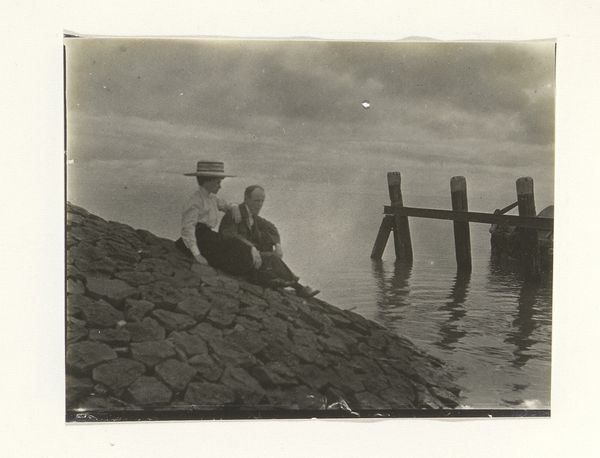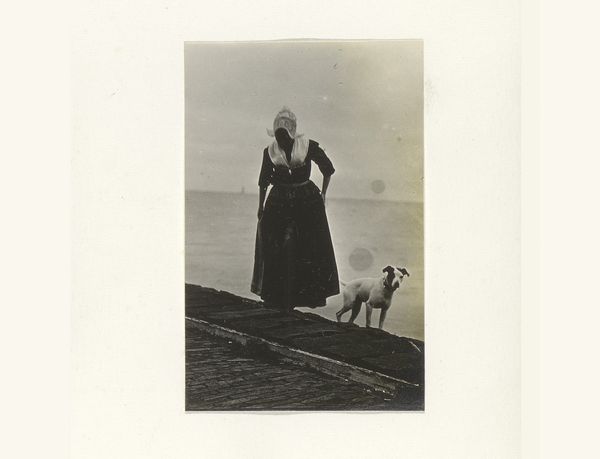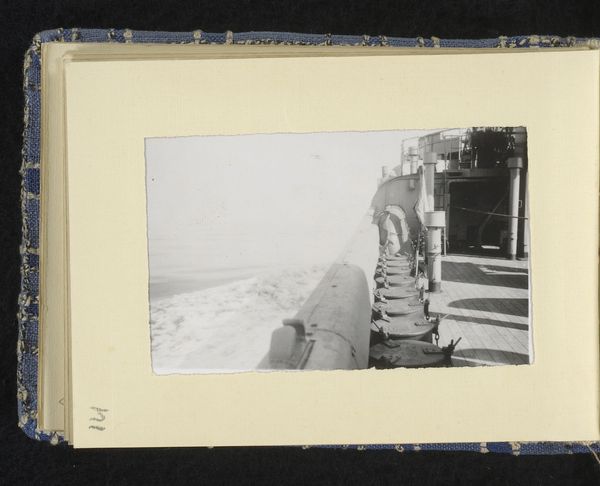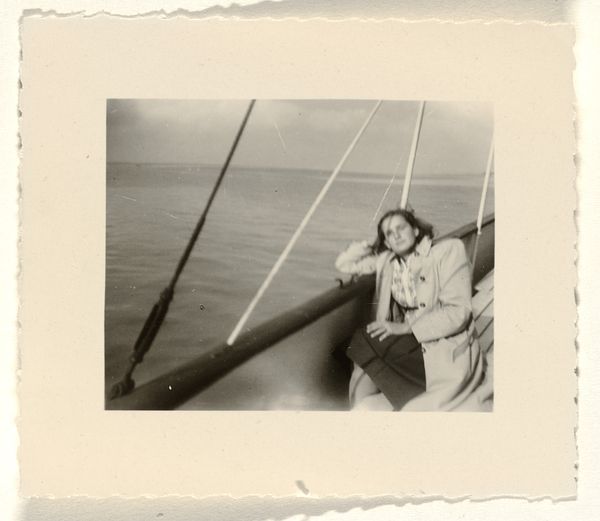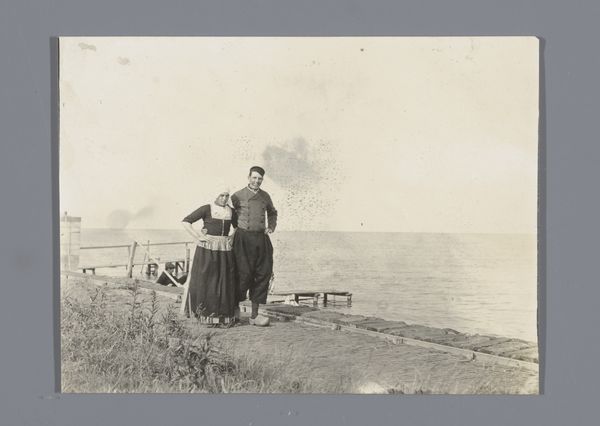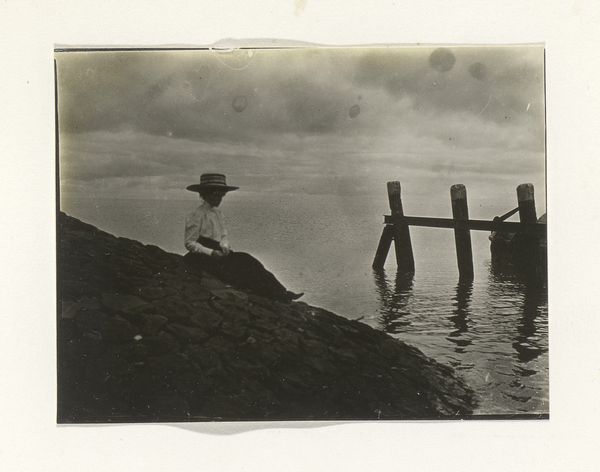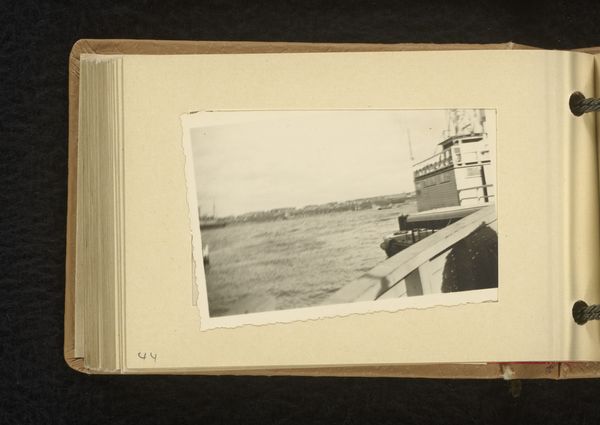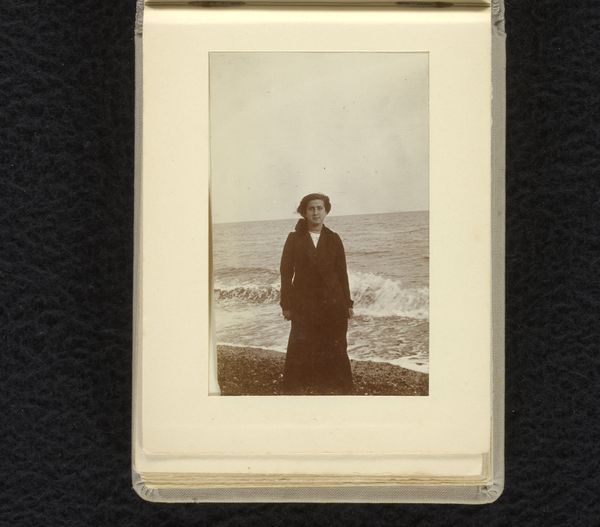
photography, gelatin-silver-print
#
portrait
#
landscape
#
photography
#
historical photography
#
gelatin-silver-print
Dimensions: height 76 mm, width 101 mm
Copyright: Rijks Museum: Open Domain
Curator: The stark stillness of this gelatin-silver print, "Vrouw in klederdracht aan een water," or "Woman in costume by the water," by G. Hidderley, from circa 1900-1910, really strikes me. What are your initial thoughts? Editor: Somber. The low contrast and tight composition almost flatten the depth of the image. The way the stone pier runs diagonally across the frame, though, does create a strong visual anchor. Curator: Indeed. Early photography had such an interesting, almost anthropological role to play. Images like this documented cultures and traditions rapidly changing at the turn of the century, particularly with the rise of industrialization. Consider this woman's traditional garb. Photography offered a means of preservation. Editor: Precisely! It’s all about the stark tonal gradations, the geometry inherent in the way her white bonnet contrasts against her dark dress, or the textured, rough-hewn blocks of the pier against the flat, almost undifferentiated plane of the water and sky. Hidderley clearly uses light to define shape and create tension. Curator: And the pose itself! She’s seated, but almost formally so. This wouldn’t have been a snapshot, right? These early photographic processes necessitated long exposure times. Meaning the subject, likely a local woman, probably was requested to sit here like this for an extended amount of time, a common characteristic for such commissioned work for the middle class at the time. It emphasizes how constructed early images like these often were and why they circulated so widely as ethnographic documents and souvenirs. Editor: Agreed, there's an artificiality there. But there is also such compelling composition, don't you think? That carefully calibrated interplay of light and dark, and the visual weight on her form in this very somber fashion; she is the real focus, almost staged perfectly. Curator: Absolutely. Looking at the woman through the historical lens, it's easy to lose her in sociological narratives. I'm reminded to consider her individual humanity as well! Editor: And in turn, your reminder highlights how sometimes appreciating an image, also relies on its complex structure and visual dynamics, the formal underpinnings that lend it meaning in the first place!
Comments
No comments
Be the first to comment and join the conversation on the ultimate creative platform.
